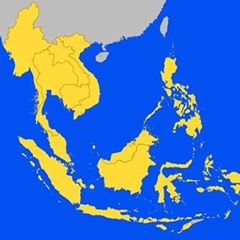EDITORIAL-SG: The Straits Times says- Coronavirus hits South-east Asia hard
The Straits Times
After a slow start in responding to the Covid-19 pandemic, the more populous countries of South-east Asia are feeling its full force. Indonesia, which reported zero infections as recently as Feb 29, now has the highest infection rate in the region, with more than 1,500 confirmed cases as well as one of the highest fatality rates in the world at close to 9 per cent. In Thailand, the pandemic has spread to 66 of the country’s 77 provinces. Since mid-March, other countries in South-east Asia have also witnessed sharp upward shifts in the trajectory of infections. With their teeming cities, patchy healthcare systems, huge domestic migration flows and weak social safety nets, many South-east Asian countries are especially vulnerable to the spread of any pandemic, especially one as contagious as Covid-19.
.
 Ads by: Memento Maxima Digital Marketing
Ads by: Memento Maxima Digital Marketing
@ [email protected]
– SPACE RESERVE FOR YOUR ADVERTISEMENT
Apart from the devastating health impact, their economies are being hit simultaneously on many fronts. China’s industrial shutdown in January and February led to an interruption in the supply of key raw materials, which slowed or stopped production in thousands of factories. Those that source locally have also been hit by partial lockdowns and quarantine measures – which may be tightened in the near future. Tens of thousands of workers have already been laid off, many with wages unpaid. Tourism, which is a major source of earnings for economies like Thailand and Indonesia – and on which some regions, such as Phuket and Bali, almost totally depend – has all but dried up. The impact on currencies is also taking its toll. The Indonesian rupiah and the Thai baht have been the worst affected in the region, declining by 16 per cent and 14 per cent, respectively, against the US dollar this year. As a result, many companies would find it hard to service their dollar-denominated debts. Others would have difficulties raising financing on the markets.
.
 Ads by: Memento Maxima Digital Marketing
Ads by: Memento Maxima Digital Marketing
@ [email protected]
– SPACE RESERVE FOR YOUR ADVERTISEMENT
The upshot of all these developments is that South-east Asian countries face the prospect of serious economic damage, which would also have knock-on effects on Singapore, given its extensive trade links with the region. In its April economic update for the Asia-Pacific, the World Bank estimated that economic growth in the region (excluding China) will slow from 4.7 per cent last year to 1.3 per cent this year in its baseline scenario, and to minus 2.9 per cent in a lower-case scenario, which would mean that an additional 11 million people would be plunged into poverty, instead of 10 million people being lifted out, which was the bank’s pre-Covid-19 projection. Even as countries launch their own economic stimulus packages, it is vital that the international community, including multilateral agencies and aid donors, step up their financial assistance – not only for South-east Asia, but for the developing countries in general, many of which also face similar economic strains as a result of the pandemic.










